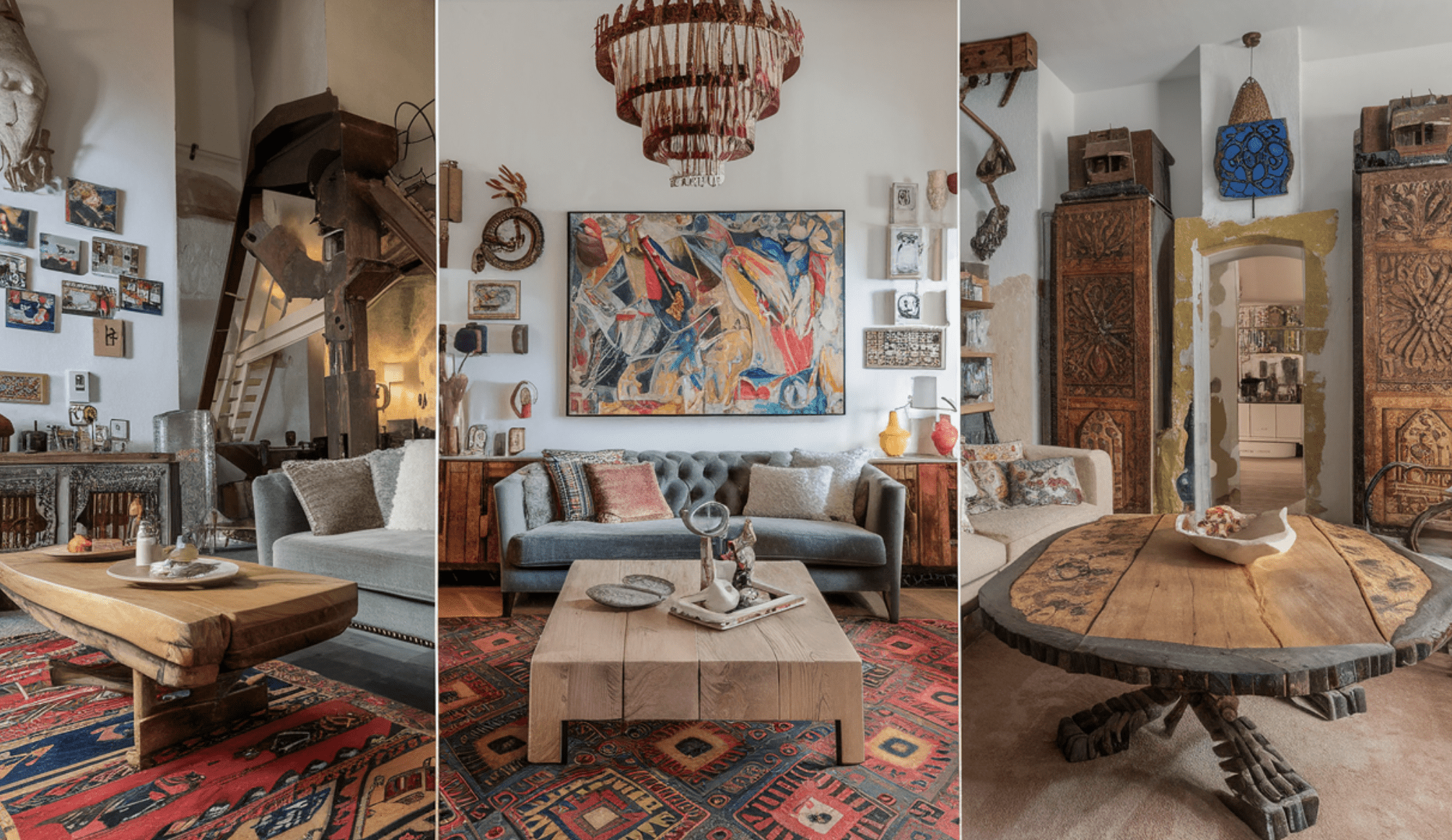Table of Contents
ToggleKey Takeaways
- Achieving Cohesiveness and Balance: Tips on blending different styles harmoniously.
- Managing High Costs: Strategies for budget-friendly eclectic design.
- Ensuring Personalization: Making sure your space reflects your unique taste.
- Professional Help: How Ovon-D.com can help bring your eclectic vision to life.
Achieving Cohesiveness and Balance
Understanding Eclectic Design: Eclectic interior design is characterized by the intentional and harmonious mixing of various styles and influences. The goal is to create a cohesive look that feels curated and balanced, rather than random or chaotic. It’s about finding the common thread that ties diverse elements together, whether it’s through color schemes, textures, or thematic elements. Challenges of Cohesiveness: One of the biggest challenges in eclectic design is ensuring that different elements work together harmoniously. Without careful planning, the mix of styles can easily become overwhelming and disjointed. Tips for Balance:- Start with a Neutral Base: Use neutral colors for walls and large furniture pieces to create a cohesive backdrop. This allows bold and diverse elements to stand out without clashing.
- Create Focal Points: Choose a few standout pieces that draw attention and set the tone for the room. This could be a statement piece of art, a unique piece of furniture, or an eye-catching rug.
- Use Repeating Elements: Incorporate recurring colors, textures, or patterns to tie different styles together. For example, a common color palette can unify diverse pieces and create visual harmony.
Managing High Costs
Budgeting for Eclectic Design: One common concern is the potential high costs associated with hiring designers and sourcing unique pieces. However, with thoughtful planning, it’s possible to create a stunning eclectic interior without overspending. Cost-Saving Strategies:- Prioritize Key Pieces: Invest in a few high-impact items that define the space and mix them with more affordable accessories. For instance, a unique piece of art or a designer chair can set the tone for the room.
- DIY Elements: Incorporate DIY projects to personalize the space without breaking the bank. This could be anything from painting your own abstract art to repurposing vintage furniture.
- Second-Hand Treasures: Explore vintage shops, auctions, and online marketplaces for unique finds at lower prices. Sites like Etsy and Chairish offer a plethora of eclectic decor options that won’t blow your budget.
Ensuring Personalization
Reflecting Personal Tastes: The beauty of eclectic design is its ability to reflect the homeowner’s unique tastes and personality. However, it’s important to ensure that the space doesn’t just look like a random mix of styles, but rather a thoughtful collection that tells a story. Personalization Tips:- Showcase Collections: Incorporate personal collections (art, travel souvenirs, etc.) to add unique character to the space. These items not only tell a story but also add a personal touch that makes the space feel like home.
- Custom-Made Pieces: Invest in custom furniture or decor that reflects personal preferences and fits perfectly within the eclectic theme. This ensures that your space is truly one-of-a-kind.
- Meaningful Art and Decor: Choose art and decor items that resonate personally and add depth to the design. These pieces should evoke memories and emotions, making the space feel deeply personal.


